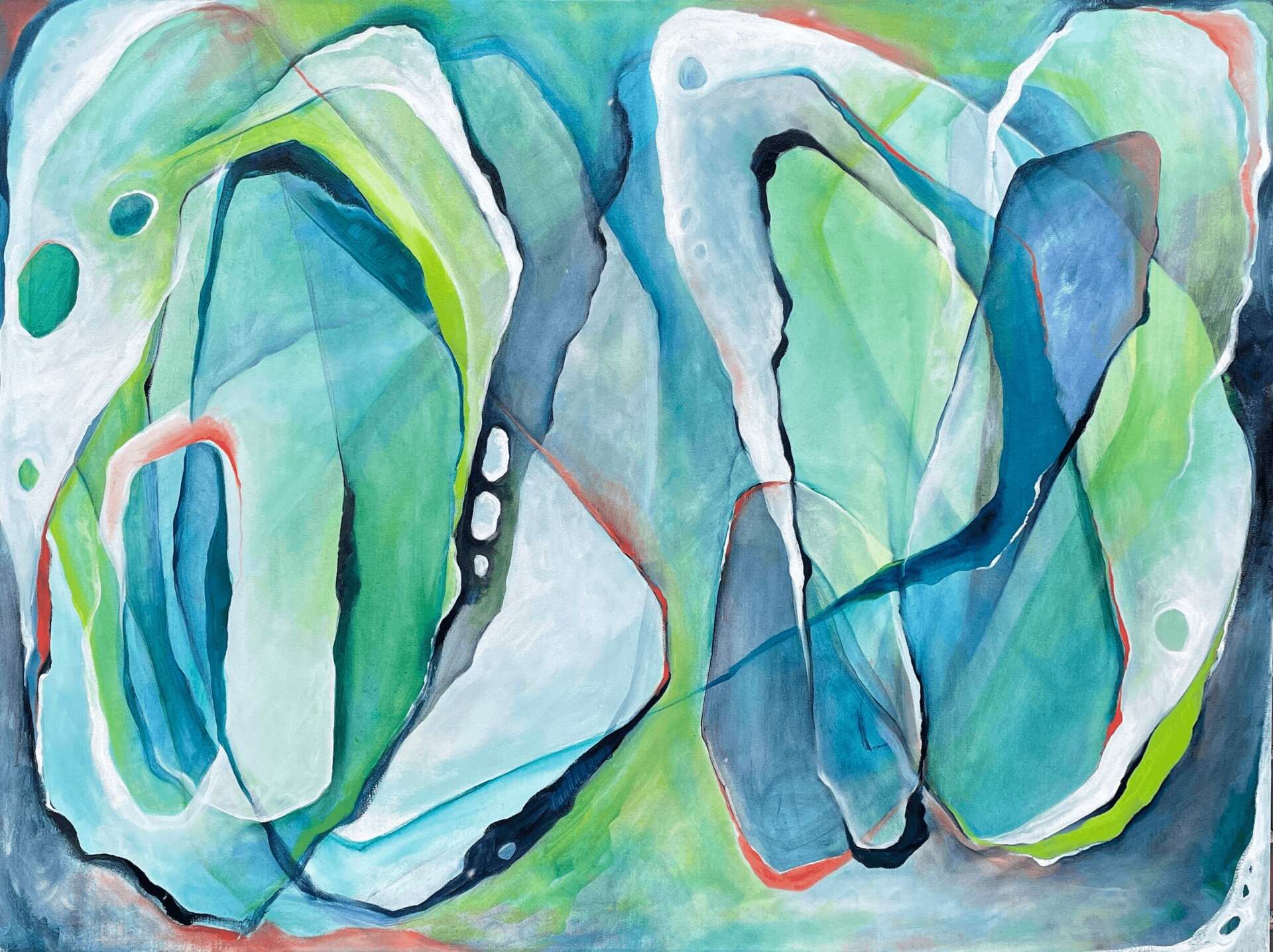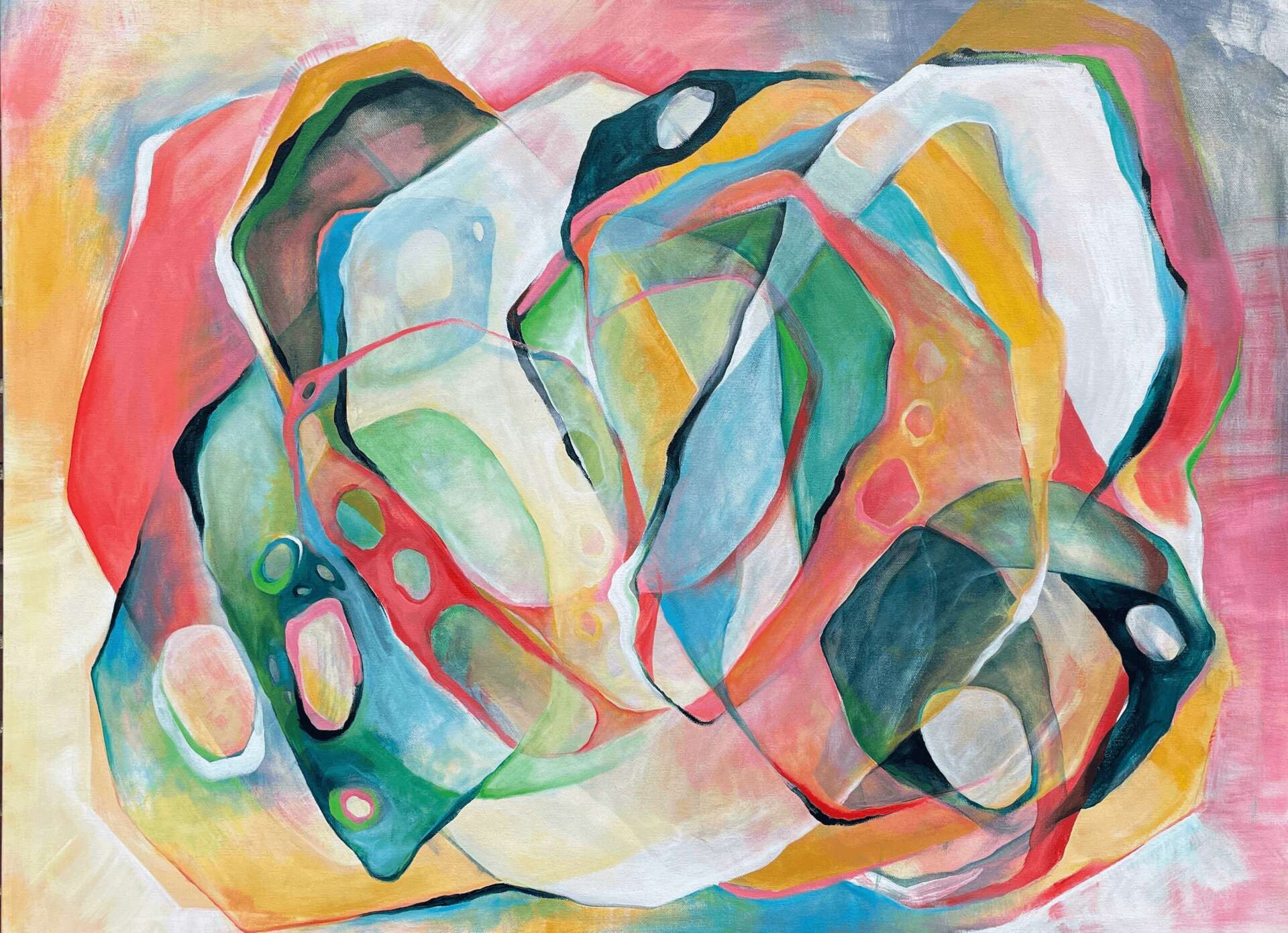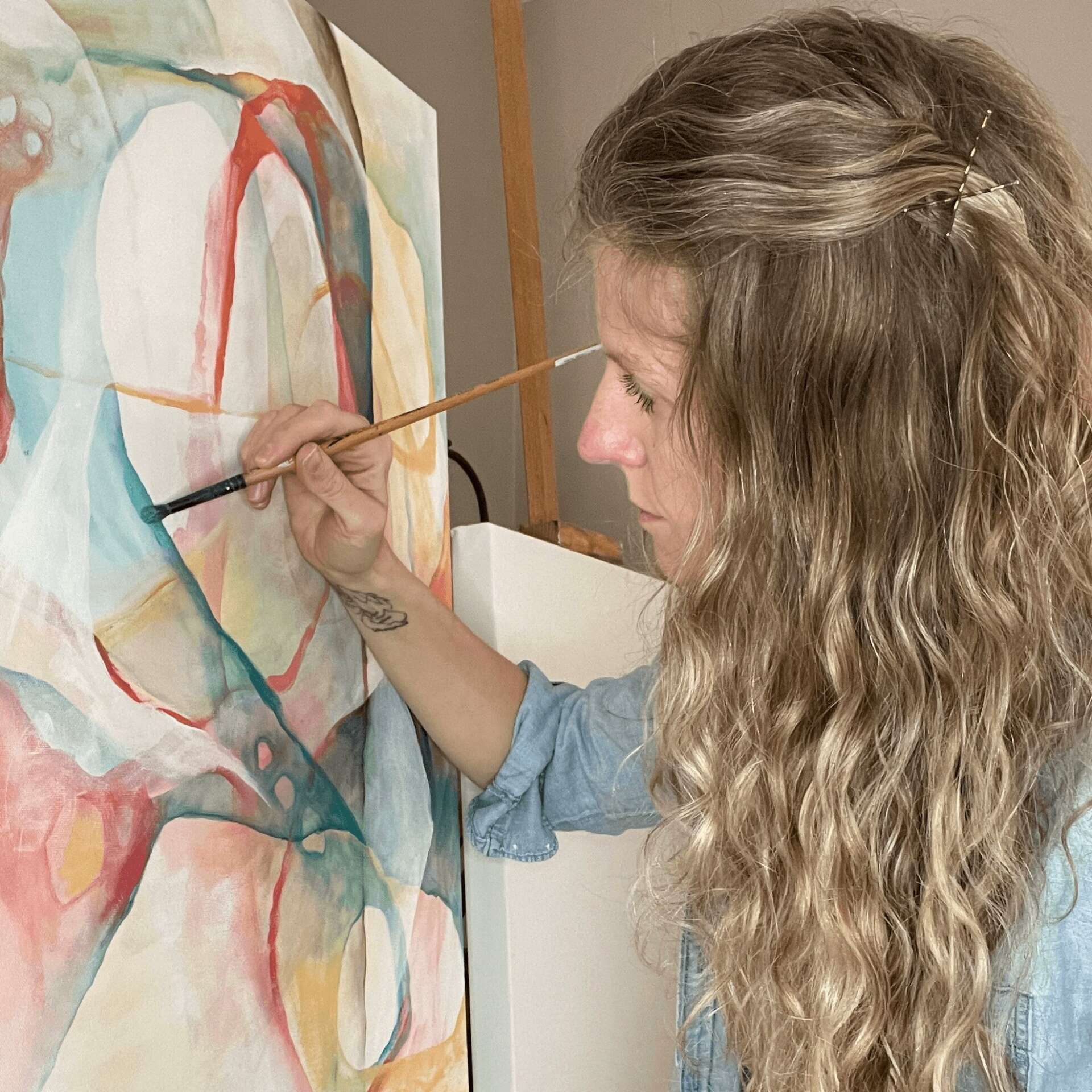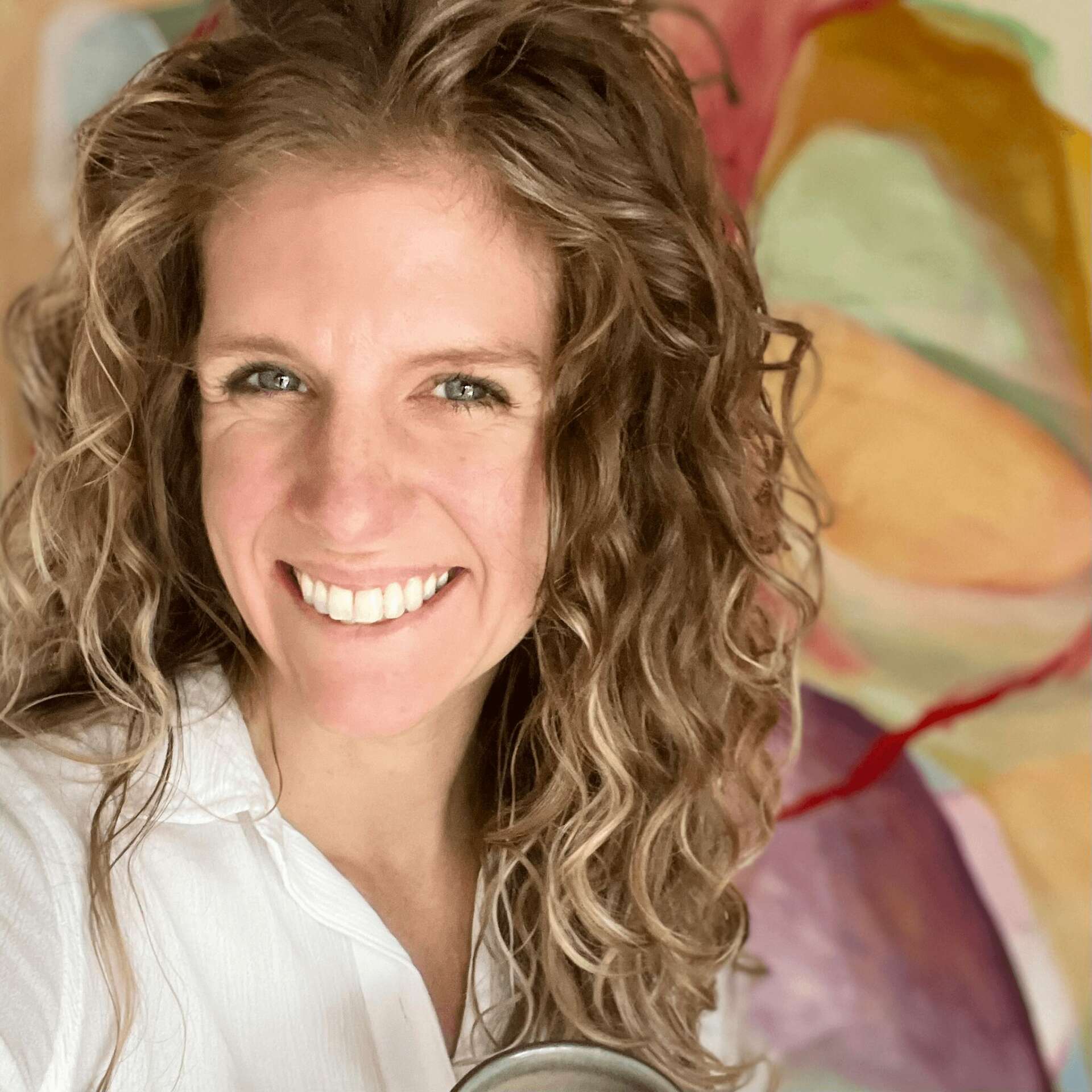We were lucky to catch up with Erin Garrity-Duffey recently and have shared our conversation below.
Hi Erin, thanks for joining us today. It’s always helpful to hear about times when someone’s had to take a risk – how did they think through the decision, why did they take the risk, and what ended up happening. We’d love to hear about a risk you’ve taken.
I had been on a creative hiatus after having two kids in under two years and wanted to get back to my creative practice. Being a mom of two kids makes financing a studio space and then managing time to away to use it was out of the question. The only solution to get back into making again, was to work at home. I live in a modest house shared with my small family and space is at a premium. I was making it work at the kitchen table, cleaning-up each night before going to bed so it could be family occupied in the morning. This was less then ideal and it wasn’t long before my concepts (and my paintings) out grew this set-up. During this time I had been approached by Madron Gallery in Chicago to have my first solo show and I had ideas that couldn’t be contained at the kitchen table. I looked around the main room of our home and found a corner that didn’t have much purpose, just an old dresser housing mittens. It wasn’t much, at about 3 1/2 feet wide and 3 feet deep, but it was about to become my “studio” and change my life. I spoke with my family about my plans to build an easel that could store my supplies and accommodate up to 7ft paintings. A trip to Ikea and a chop-saw later I had a custom studio space that allowed me more creative freedom, and increased my productivity an unimaginable amount.

As always, we appreciate you sharing your insights and we’ve got a few more questions for you, but before we get to all of that can you take a minute to introduce yourself and give our readers some of your back background and context?
I’m an artist who daylights as a middle aged mom and art teacher. I spend my days lost in my mind and nights in the studio. I drink too much coffee, never brush my hair and MAY collect way too many microscopic images of organic matter. But hey, everyone needs a hobby. Right? My work is based off research in memory and cognitive neuroscience. I’m interested in how disease and trauma affect memory, storage, and retention, and use this as a springboard for my intuitive abstract compositions. As I paint, I consider the relationship of color, tension, and composition to my own memories.
Painting has allowed me a space to confront ideas and fears associated with trauma and loss. My work is an extension of my experience and a manifestation of my compulsive research around them. As an artist, I love seeing people connect to the work visually. As a human, it is the discussion with a collector about what drew them to a piece and how my narrative of development aligns with their own experiences.

Do you think there is something that non-creatives might struggle to understand about your journey as a creative? Maybe you can shed some light?
I think non-creatives struggle with the “I could do that” mentality when first engaging with abstract work. Yes, of course you can “do that”. Now that you looked at it, watched my process videos, bought supplies, I have, ABSOLUTELY, no doubt in my mind someone could learn to copy my craft.
But you see, it isn’t JUST about the product. It’s about the process. It’s about what drives a creative person to make, and the courage it takes to share that intimate experience with the viewer. It’s about the thoughts, revisions, doubts and success that comes with the creative journey that adds depth to the work that is felt, when not seen.
So to the non-creatives, I invite you. I invite you to take up practice and move from non-creative to creator. Unlearn everything you’re ever thought being an artist is and just make. Pour yourself in without apprehension and I’ll be here to support you. There’s plenty of space on Team Artist, you just have to make your own jersey.
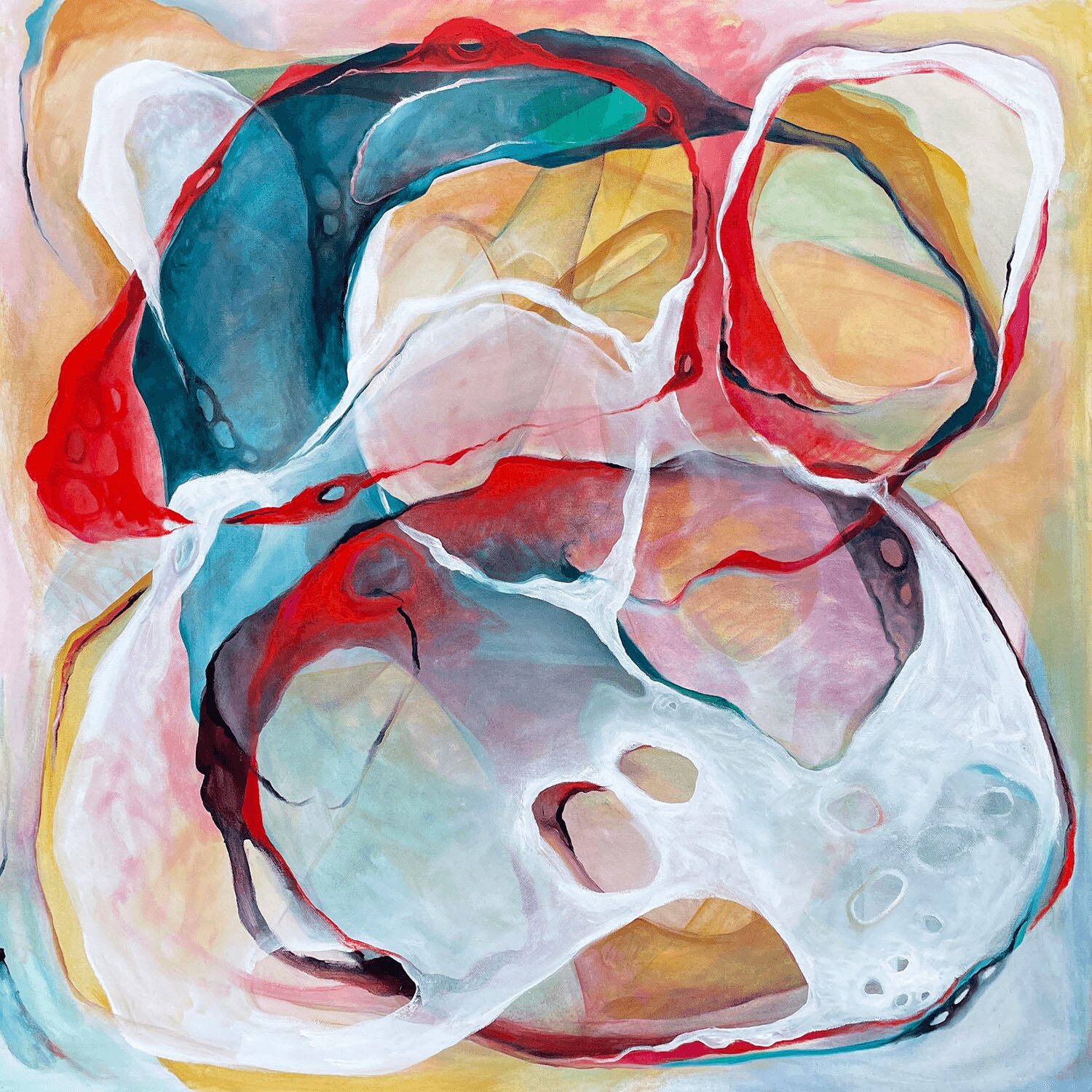
How do you keep in touch with clients and foster brand loyalty?
Keeping in touch with clients and collectors is essential. I use a newsletter pushed out a few times a year from emails collected at fairs or through my website. The emails let people know about events I will be part of or the occasional studio sale opportunity.
Mostly though I try and stay active on my Instagram account. I post a story (almost) every day, post my new work, and create process and anecdotal reels. People like to be part of the process of making the work. I can’t tell you how many times I have been at a fair and some one came to purchase a particular piece they followed the creation of on social media, and I love that!
Contact Info:
- Website: https://www.eringarrityduffey.com/
- Instagram: https://www.instagram.com/eringarrityduffey/?hl=en
- Facebook: https://www.facebook.com/erin.garrityduffey/
- Other: https://www.jnunezgallery.com/eringarrity-duffey
